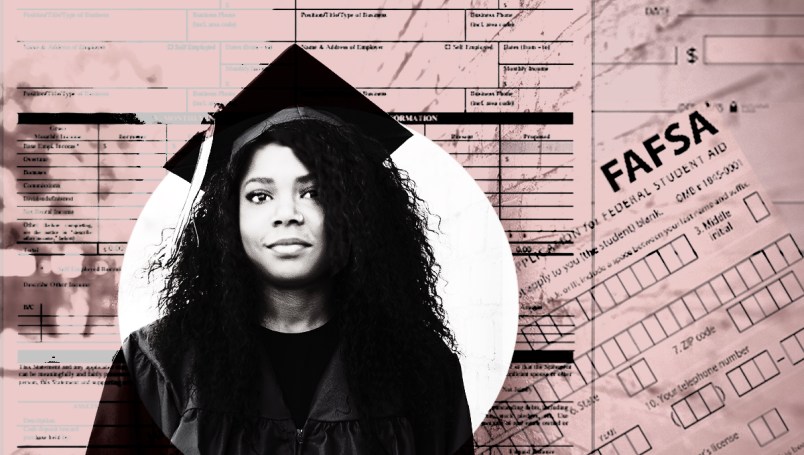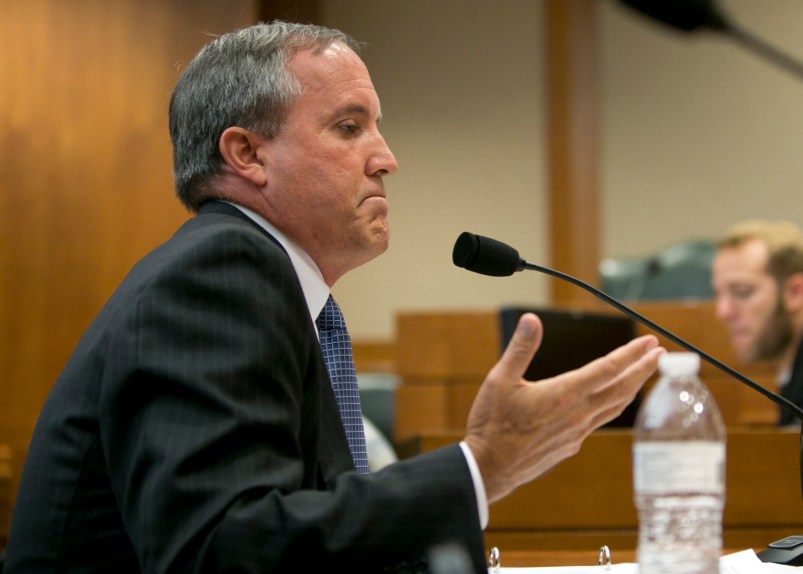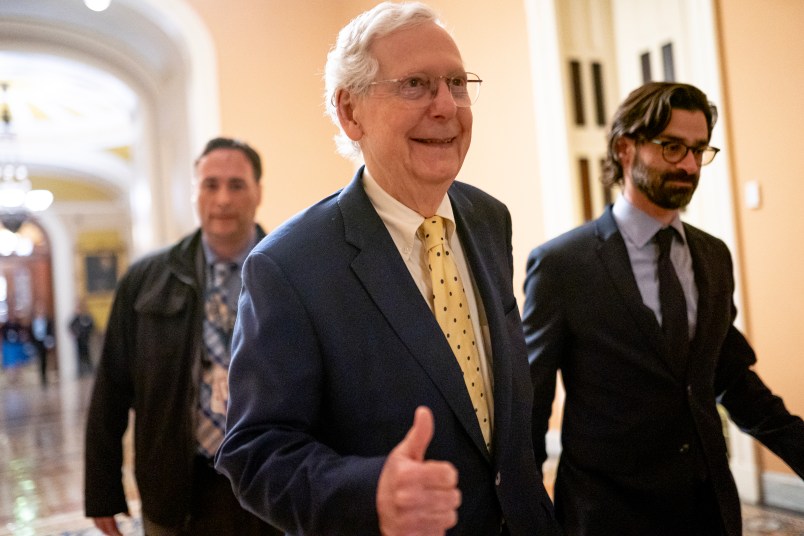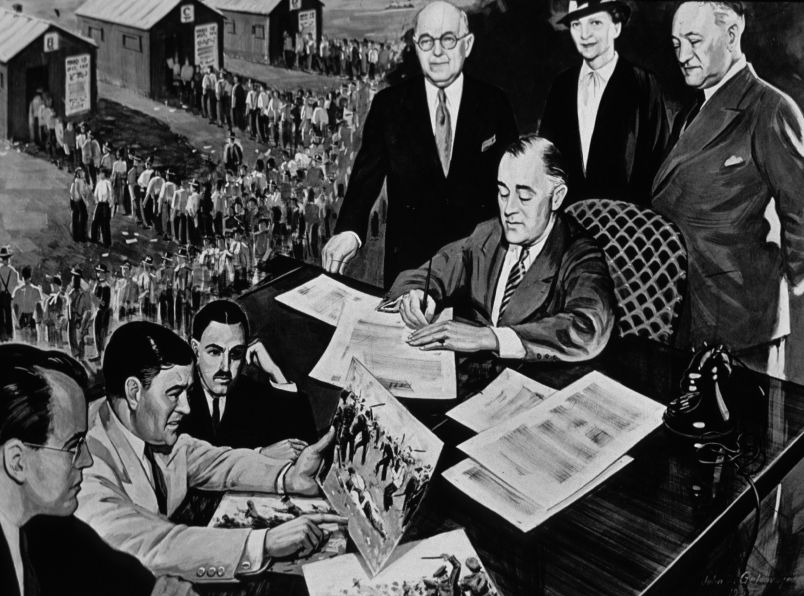This piece is part of TPM Cafe, TPM’s home for opinion and news analysis. It is an excerpt from “Indebted: How Families Make College Work at Any Cost,” out today.
For decades, American families have taken on debt and have also assumed the financial risk of investment. Today, however, gaining access to higher education usually involves an engagement with the world of finance so significant that it has redefined what it means to be middle class.
In earlier decades, social scientists described the middle class largely as a function of occupation. Sociologist C. Wright Mills solidified this understanding in his mid-twentieth-century classic, “White Collar: The American Middle Classes.” For both Mills and his contemporary, William H. Whyte, who penned “The Organization Man,” not only did the nature of jobs and their level of pay determine whether someone was middle class, so did adherence to a social ethic that an individual’s career and life goals should be in harmony with the goals of the organizations that paid them. Finance was always a part of the story, however.
White-collar workers also sought suburban housing and the mortgages they required. The process of financing home purchases through mortgages was the first step that brought millions of American families much more deeply into the financial system. Americans took on debt for home ownership willingly, because they were motivated to provide better lives and greater opportunities for their children. Mortgages allowed young parents to move to suburbs, where they could send their children to good schools.
The federal government and private lenders encouraged and subsidized these choices, enrolling the American middle class in a larger national project. As the Cold War got going, the government subsidized real estate development for the white middle class as a foundation of strengthening U.S. democracy and fighting communism. To this purpose, the federal government built infrastructure for transit and energy in rural regions, setting them up to be new residential areas. It partnered with banks to encourage more families to purchase homes and guaranteed home loans issued by private banks. Home ownership became a bedrock of middle-class wealth, and of achieving financial security, when these new homeowners either paid off their mortgage or sold their home for an increase over its purchase price.
In the classic, twentieth-century American mobility story, purchasing a home became a primary means of securing financial independence. Racial preference for whites and exclusion of African Americans and others from government home ownership programs meant that finance as a means of mobility was also a driver of inequality. For those included, however, home ownership enabled two prized cultural aspirations. High-quality suburban schools offered good educations for children, and a well-tended home filled with the bounty of postwar consumer goods improved the social standing of the family while promising financial security for retirement.
The middle class took another significant step into the world of finance with the passage of the Higher Education Act of 1965, its reauthorization in 1972, and the Middle Income Student Assistance Act of 1978, which, together, established and expanded the federal loan program. At the time, the government did not want to be in the business of directly offering education loans, so it created incentives for banks to make them, and it supported college students to borrow from private lenders by backing the loans, as it had done with home mortgages.
The 1980s brought the next giant step, this time into the sphere of investment, with the proliferation of tax-advantaged 401(k) and 403(b) accounts. Corporations, which were questioning their commitments to workers, began phasing out “defined benefit” pensions and replacing them with opportunities for workers to invest in “defined contribution” investment plans, backed by the federal government with tax incentives, or, in many cases, not offering any retirement support at all. The U.S. public program for retirement, Social Security, was too limited to underwrite a middle-class lifestyle in retirement, and without a private pension, a retirement investment account became essential.
The 1980s also saw the federal government revising its understanding of its responsibilities to the public, a shift in political morality that gave support to a rising commitment to fiscal austerity. One clear target was student aid. President Reagan’s budget director, David Stockman, summed up the politics justifying this sea change in 1981: “I do not accept the notion that the federal government has an obligation to fund generous grants to anybody that wants to go to college. If people want to go to college bad enough, then there is opportunity and responsibility on their part to finance their way through the best way they can.”
State legislatures enacted a similar set of policy cuts. Across the country, state governments chipped away at appropriations for public universities and colleges, which have continued to the present day. These cuts have imperiled the budgets of public universities. In response, universities both raised tuition bills for in-state students and began to court out-of-state and out-of-country students and charge them considerably higher tuition and fees, often on par with those of private universities and colleges. Meanwhile, the costs of private universities and colleges also rose.
To enable qualified students whose families couldn’t afford the higher prices to attend, both public and private colleges and universities began to operate with a “high-tuition, high-aid” model, charging elevated sticker prices for more affluent families while funneling a portion of those dollars to support admitted low-income students This arrangement put parents with middling incomes in a particularly tight bind. Their earnings had been stagnating since the 1970s, while their jobs had become less secure; and home values had fluctuated more than in the past, making calculations about their finances less certain. With the rising college costs, most didn’t have the discretionary income to foot the higher college bills. Outside financing would have to fill the gap.
During the 1990s, banks and the federal government came to agree that debt was the way students should fund college education. They started vigorously promoting student loans and made them available regardless of need—some offered directly through the government, others through private lenders. Students from middle-class families took advantage of the opportunities, and borrowing soared.
Meanwhile, costs continued to rise. Why is hotly debated. Some argue that the key reason stems from colleges competing for highly qualified and wealthy students by spending more on expensive amenities, like elaborate athletic facilities and lavish dormitories, to attract them. Others point out that colleges and universities have greatly expanded their high-salaried, administrative staffs. Another widely circulated theory proffers the idea that the availability of aid funds may have led colleges to increase costs. Whatever the explanation, costs increased especially steeply in the years after 2000. According to the College Board, a nonprofit dedicated to expanding access to higher education, the cost of tuition and fees for in-state students at public universities has risen more than threefold since 1987, with private college costs rising far more.
The 2008 financial crisis led to a dramatic change in lending. In 2010, with banks largely withdrawing from offering student loans, President Obama and Congress took over student borrowing. Federal loan programs were placed almost entirely under the government’s wing at the Department of Education, though the job of collecting payments was awarded to nine private loan servicers (including Navient, once a part of the federally linked Sallie Mae), which take a healthy profit in the process.
In 2018, student debt made the federal government the largest consumer lender in the United States. Approximately forty-four million Americans, including both parents and students, carry federally sponsored loans for higher education that total almost $1.5 trillion. For perspective, Bank of America held about $200 billion in consumer loans; JPMorgan Chase held about $100 billion. The federal government extended $101 billion in education debt in 2018 alone. Even so, federal loans often do not provide enough to pay the entire college bill, and an elaborate system of funding has emerged, with states, private lenders, and schools offering a convoluted and often confusing range of options.
Many middle-class families must engage in a difficult bootstrapping process, with both parents and students taking out loans, students contributing funds from either work-study jobs or off-campus employment, and parents often tapping into their savings and home equity. College funding has become a complex challenge that would have been inconceivable in the 1980s and 1990s, when the parents of today’s college students were themselves in school.
The Student Finance Complex
To cobble together the various forms of financing available, middle-class families must now make their way through a thicket of financial policies and programs that link government, banks, and universities together into what I call “the student finance complex.” The federal government is the gateway. The Department of Education collects information on household earnings and assets from families to assess their need. It then informs families of an amount they will be required to pay, called the Expected Family Contribution, and determines their access to federal aid.
Financial aid from states and colleges also depends on the information collected by the federal government. Colleges and universities take charge of assembling students’ financial packages, combining the offers of federal and state funds with their own support in a package assembled individually for each family. College aid officers serve as the human face of the student finance complex, whom students and family members can turn to for advice when their packages fall short, when they need certification for parent loans, and when the federal government fingers them for “verification,” the euphemism for a student aid audit.
The complex also includes private investment firms, which have collaborated with the federal and state governments to offer savings and investment vehicles with tax incentives intended to help parents build up their college funds. The minute newborns receive their Social Security numbers, for example, parents can open educational investment accounts, known by their tax-code moniker as 529s. Mutual fund giants like TIAA-CREF, Fidelity, T. Rowe Price, and Schwab manage their deposits.
The student finance complex is even more labyrinthine than this, including a vigorous market in the secondary sale of loans. Private banks repackage loans and sell them to investors as student loan asset-backed securities (SLABS). Silicon Valley gets into the action too, with companies like SoFi refinancing the loans of high-earning graduates and securitizing them. Such trading operates among banks and largely out of public sight, however, and most families do not get involved in these more esoteric parts of the leviathan.
The need to invest and borrow funds for college has led to a vexing paradox for families, the consequences of which we explore in depth: the pathway to open futures is available only if families are willing to become financially dependent and to conform to the requirements of the student finance complex. They must provide information about their private lives on its terms. This dependence and scrutiny clashes with the middle-class standard of autonomy.
What’s more, the student finance complex undermines the independence of young adults, tying the generations together for years after children leave home. For one thing, aid is largely determined on the basis of parents’ financial situations. Students are not expected to have saved enough on their own, so it is parents who pay the required family contribution. Parents also often take on debts and responsibilities that tie them to their children’s lives long after graduation, effectively extending the period of children’s dependence on their parents. Many parents are paying down college debts long into a child’s adulthood, longer still when they’ve helped more than one child go to college or helped out with the loans carried in a young adult’s name.
Caitlin Zaloom is a cultural anthropologist and an associate professor of Social & Cultural Analysis at New York University. She studies the cultural dimensions of finance, technology, and economic life. Her latest book, “Indebted: How Families Make College Work at Any Cost,” explores how the financial pressures of paying for college affect middle-class families. Zaloom is also author of “Out of the Pits: Traders and Technology from Chicago to London
,” editor in chief of Public Books, and co-editor of the recent volumes “Think in Public: A Public Books Reader (Public Books Series)
” and “Antidemocracy in America: Truth, Power, and the Republic at Risk (Public Books Series)
.” Zaloom’s research has been supported by the National Science Foundation, the Russell Sage Foundation, and Stanford University’s Center for Advanced Study in the Behavioral Sciences, and her findings have been covered in outlets including the New York Times, the BBC, and The Atlantic. Follow her on Twitter: @CaitlinZaloom.









